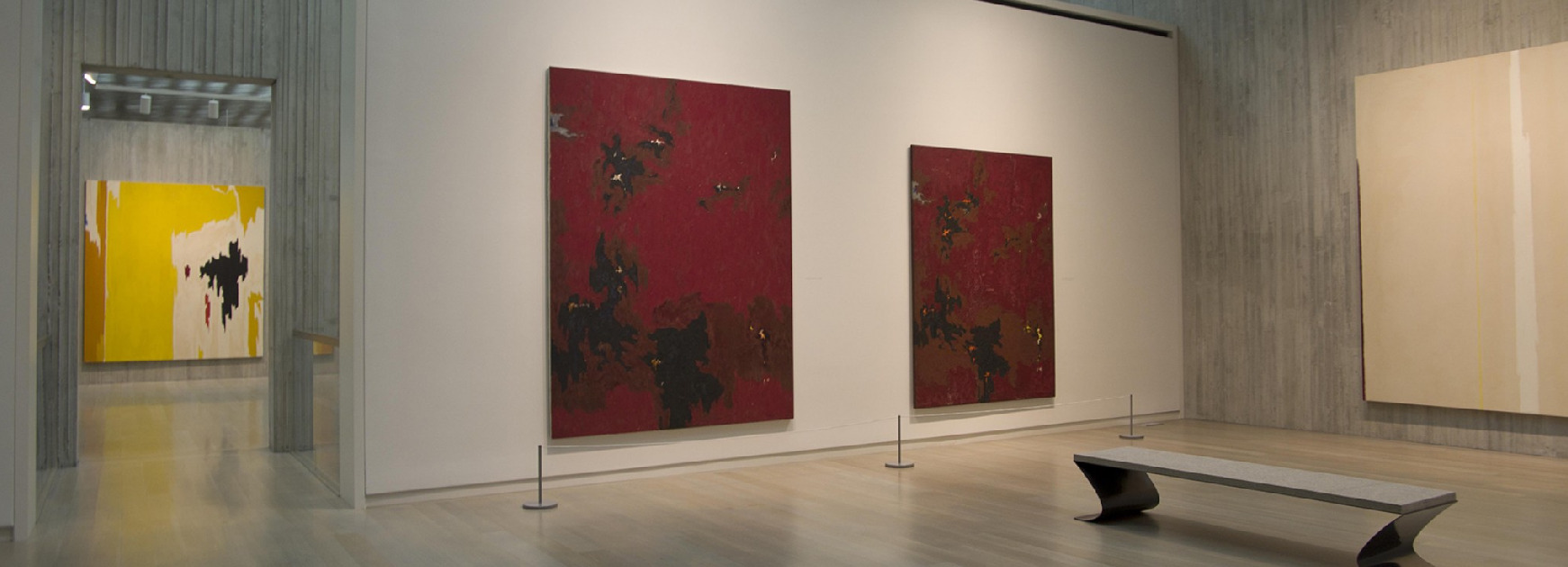By Sarah Wambold
“An interesting thing happens when you actually see these works side by side,” Clyfford Still Museum Director Dean Sobel said–while standing in front of a pair of nearly identical canvases–on a recent tour of the just-closed Repeat/Recreate exhibition. When I stood in front of any pair of Still’s massive paintings, I was struck by how true Sobel’s statement was. As I looked at the paintings, I felt like I was getting a glimpse into the artist’s mind.
I was also full of questions. Why did he paint this more than once? Why did he make that tiny mark on the lower left—that looks like an errant thumbprint or smudge—red on this one and blue on the other? And just how similar are Still’s “replicas” overall?
These are just a few of the questions that ran through my head when I studied the paintings, which, notably, will not be hung together again at any point in the foreseeable future. Several of the “mates” are owned privately or by other institutions and were lent to the Clyfford Still Museum specifically for this show.
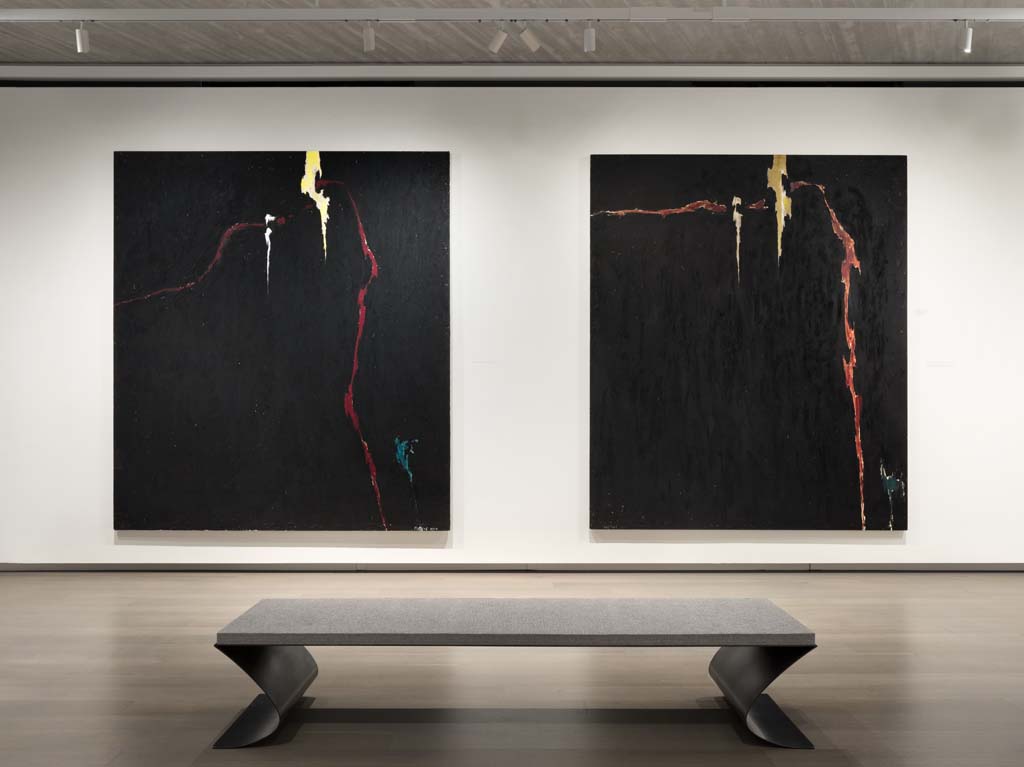
Before Repeat/Recreate, I’d never seen anything quite like Still’s “replicas,” the subject of the exhibition. Culling paintings largely from the forties and fifties, the exhibition featured Still’s abstract expressionist works. The mere fact that Still created “replicas” of many of his most powerful works suggests a level of precision, control, and mastery that debunks the mad-artist-possessed-by-sudden-inspiration myth.
In the catalogue for the exhibition, Repeat/Recreate: Clyfford Still’s Replicas, Neal Benezra includes a quote from art historian Susan Landauer that supports the idea that Still was masterful and precise, not an action painter. Benezra quotes Landauer: “Palette knives, brushes, and oils were laid out in meticulous order, and nothing was wasted. . . . This insistence upon discipline and control had a significant impact on his painting. . . . Accident played no part in his creative process.”
I began to wonder, if accident played no part in Still’s creative process, how technically similar are these paintings? To find out, I used an online image comparison tool that compares the color and position data of every pixel from one image to another. And, as it turns out, Still’s replicas are remarkably similar.
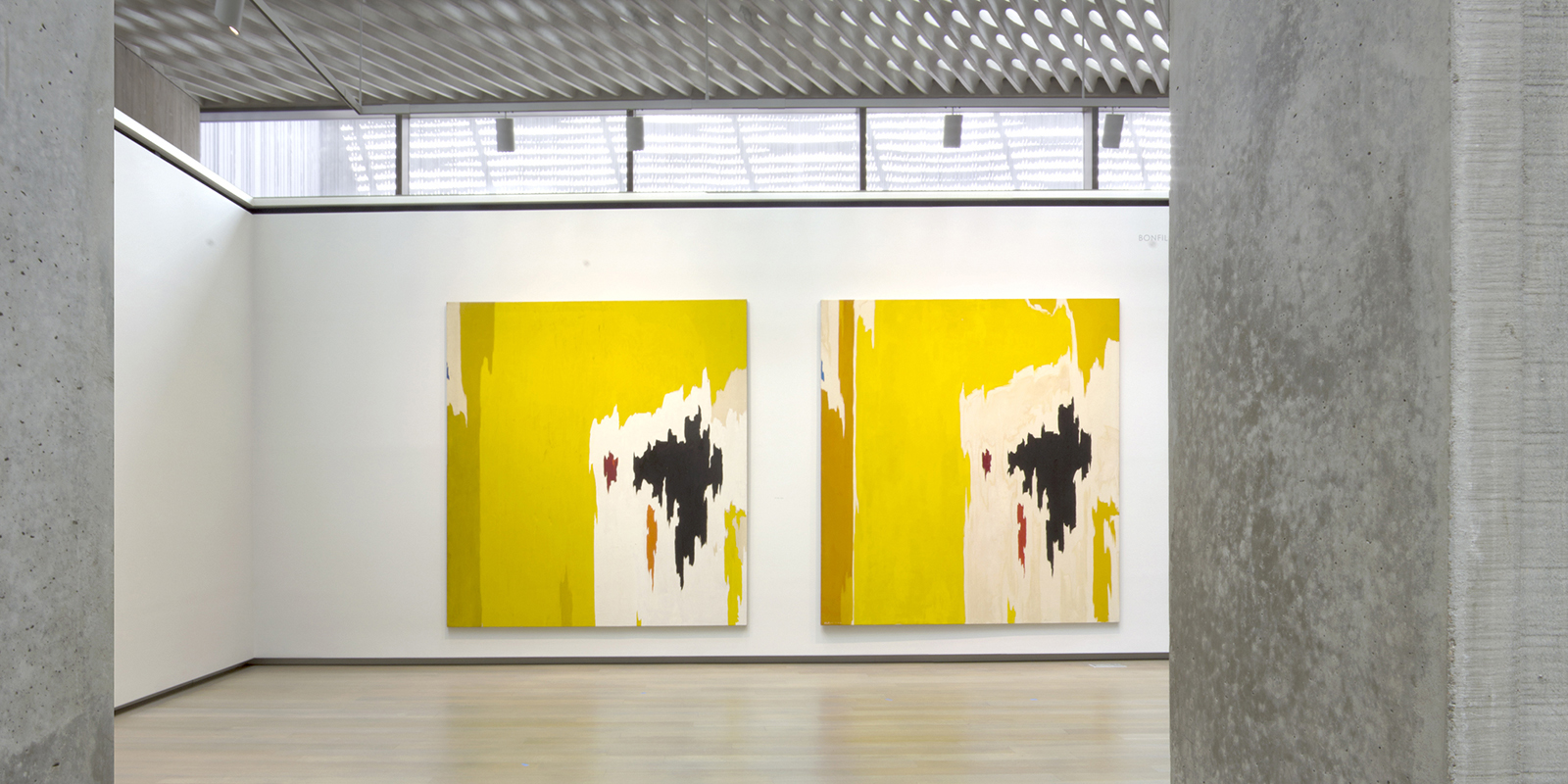
In numerical terms, the 1956 pair of yellow paintings—PH-1074 and PH-225—only differ by 33 percent. That’s impressive when comparing two huge paintings (both approximately nine square feet). It’s even more impressive when you consider the fact that fraternal twins only share an average of 50 percent of their genetic makeup.
If you take into consideration how the paintings must have aged differently because of their differing histories and adjust the comparison for color variations, the pair is 80 percent similar. For metaphor’s sake, it’s worth noting that identical twins are about 85 percent similar in studies of IQ.
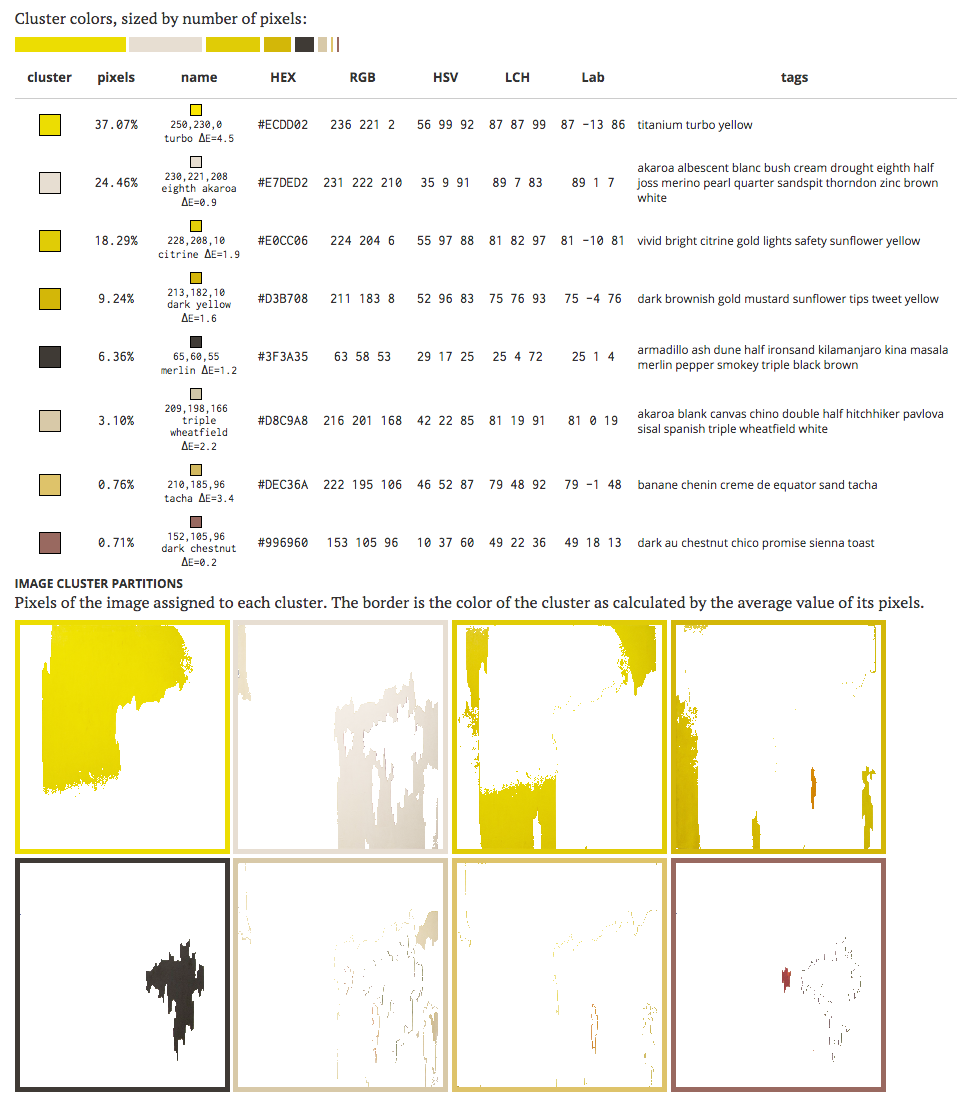
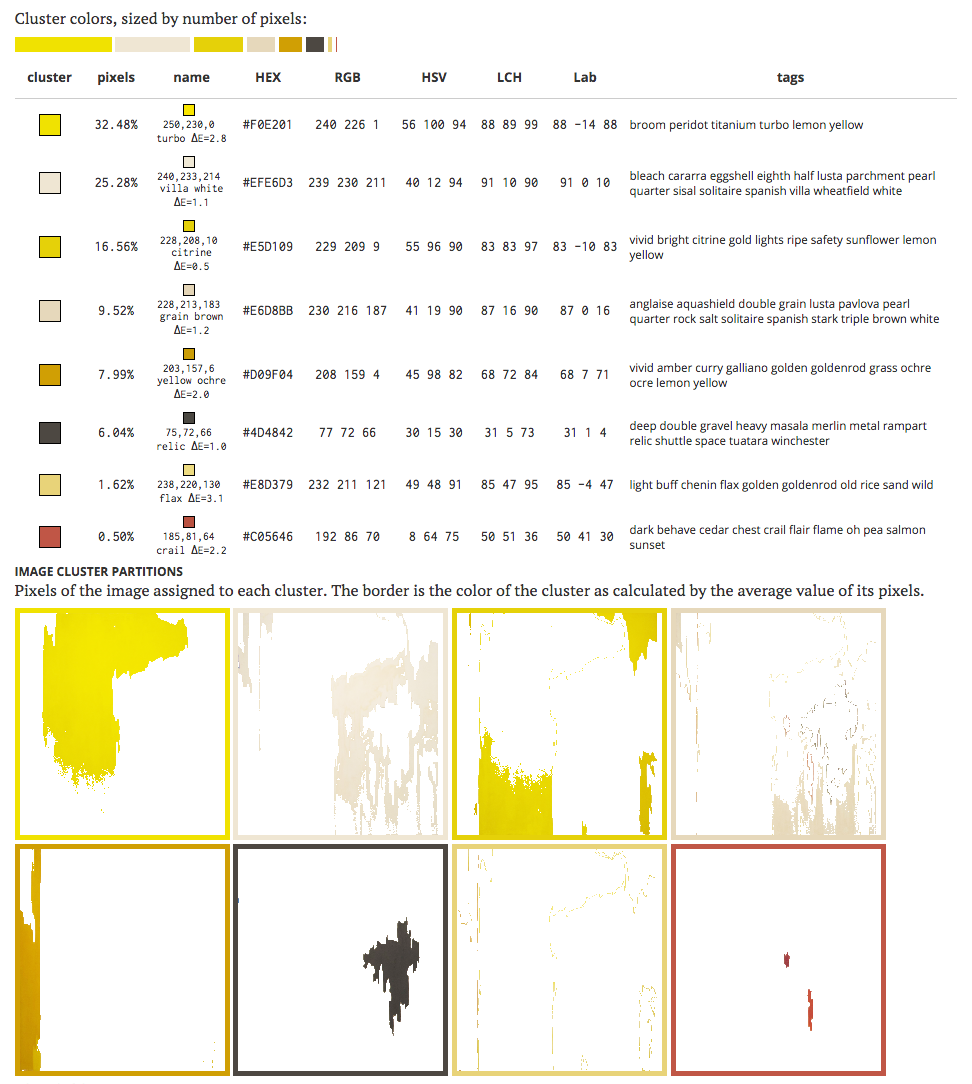
I’m fascinated by how similar the forms are when you break the paintings down into their components—particularly the black form as pictured above. Afterall, Still set out to make replicas of certain paintings, not exact duplicates. Still described the replicas as versions, not copies, when he said that, “[m]aking additional versions is an act I consider necessary when I believe the importance of the idea or break-through merits survival on more than one stretch of canvas.”
When I look at these comparisons, I’m impressed that the first three color “clusters”—which represent over 75 percent of the paintings’ surfaces—are nearly identical. The shape of the black form is also impossibly precise. If nothing else—and certainly there is so much more to consider—Still’s mastery of materials is stunning.
Studying the forms in this way allows me to focus on the differences, and that’s when I appreciate Still’s brilliance most. As I study his variations, in an effort to understand what he was thinking, I invariably notice how his deliberate choices alter my perception and experience of the work.
I spent a lot of time with these paintings during the past few months. I pulled them apart and put them back together in my mind many times. Every time I looked at them, I made new discoveries.
The Repeat/Recreate exhibition is now closed, and many of these paintings were separated from their mates and returned to their owners. I have a better understanding of Still and his work because of this one-of-a-kind exhibition of his replicas. It’s an exhibition that I won’t soon forget.
